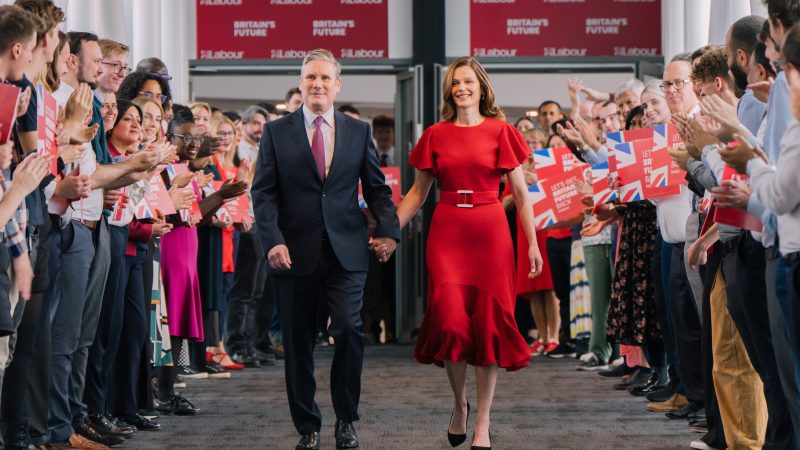
It is easy to forget, but when Keir Starmer became party leader in April 2020, the party was languishing 20 points behind in the polls. The past three years have seen a near complete reversal, with Labour now leading by around 17 points.
But it is likely still a year until the next election, and Labour continues to face a number of vulnerabilities. These were evident in our most recent focus group of undecided voters for Times Radio.
Labour’s lead is powered by two things that might not hold in a year’s time: anger at the cost-of-living crisis and a widespread feeling that now is a time for change.
There are political risks for Labour if the economy improves
Labour’s first vulnerability is that, if the economic backdrop continues to improve (by no means a trivial assumption), that feeling of crisis may begin to fade.
Indeed, it may already have begun to do so. At the start of this year, the mood in our focus groups was unremittingly bleak. The country was described as in a “post-war” state – an “absolute disaster” – “nobody’s got any money to live, eat, heat their house”.
While the picture is hardly now rosy, some chinks of light have emerged. In our most recent group, two swing voters felt things have got “a bit better recently” – “a bit more stable” – “slowly getting back on track”. This change is reflected in the polling: measures of economic optimism, such as GfK’s consumer confidence index, have been trending upwards throughout the year.
This does not mean that the public are happy about the state of the UK today – far from it. However, it does mean that Labour’s case that it is ‘time for change’ may not be so secure as it currently appears – and that the Conservatives’ alternative, ‘we’ve turned a corner, let’s not mess it up’, may be more compelling in a year than it feels today.
To reinforce its vote share, Labour must offer a positive vision
Second, Labour faces danger from apathy. Voters worry that Labour does not truly represent change – that, as Rishi Sunak has sought to underline, Starmer is just another politician. Right now, many voters (like one in our focus group) who say “they’re both just as bad as each other” are nonetheless willing to vote for Labour because “we need change”. But Starmer cannot be confident that this will remain the case.
Related is the fear that Starmer is a bit “drab”, a bit “weak”, that “it’s never very definite what he’s talking about.” In the words of one person from our most recent group, “There’s just no oomph in Keir Starmer. I don’t see any get up and go.” Starmer’s popularity has been on the slide throughout this year, and there is a clear risk that this will undermine Labour’s support.
For all these reasons, Labour must seek to offer a positive vision between now and the next election. To reinforce their vote share against an improved economic backdrop, to underline that they do represent change and to rebut the perception of Starmer as weak and standing for nothing.
Starmer took some small but important steps at conference
At conference, Starmer took some small but important steps to doing just that. He hammered what has long been a Conservative weakness but has become critical under Rishi Sunak and in a cost-of-living crisis: that the Conservatives are out of touch and the Labour Party is for the people. Starmer mocked Sunak for leading “from the vantage point of his short-haul helicopter” while stressing, “I grew up working class. I’ve been fighting all my life.”
These themes resonate strongly in our research: voters feel Sunak “has so much wealth” that he is “hard to relate to as a person”. But this language also offers a wider narrative about why Labour do represent change. Why aren’t they “just as bad as each other”? Labour’s answer: because they are for the people.
Starmer’s major announcement was on housing, promising to “get Britain building again”. This opens a clear policy dividing line with the Conservatives and, with it, the opportunity to insist that Labour do stand for something.
Just as important, the emphasis on housebuilding evokes dynamism and forward movement: Labour offering something new. Equally, as we have found again and again, voters often understand strength as a willingness to take on powerful interests. As such, the rhetoric of ‘bulldozing’ through obstacles, ‘fighting the blockers’, taking on local opposition, all goes to help present Starmer as a strong leader – someone with that bit of “oomph”.
But the party must do more to flesh out its plans for Britain
There are small signs that these interventions have had an effect. YouGov polling found a significant post-conference bump in the number of people who think Starmer is clear about what he stands for.
But this can only be the beginning if Labour is to win not just a majority but a genuine mandate for government. It is time for Starmer to put policy flesh on the bones of his vision for Britain.




More from LabourList
Lord Hayward: Disappointing May elections could decide Keir Starmer’s fate
LabourList Christmas quiz 2025 round 5: factions and unions picture round
LabourList Christmas quiz 2025 round 4: Christmas Connects